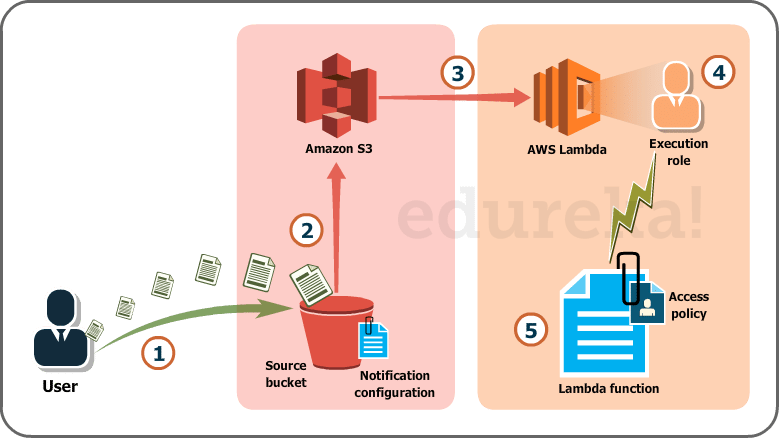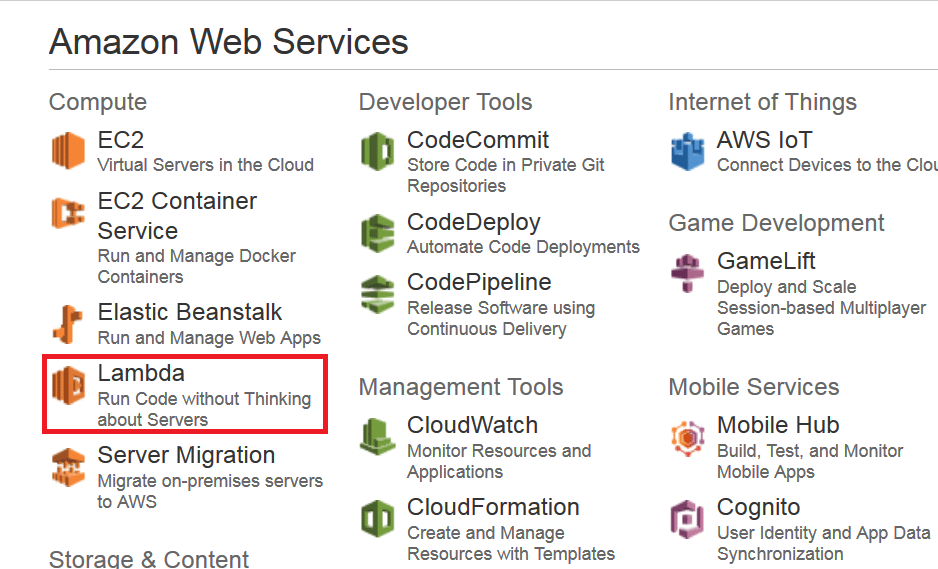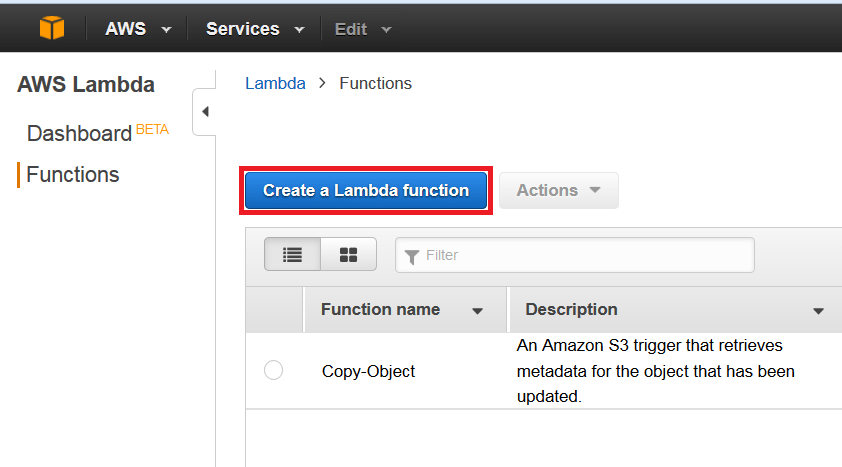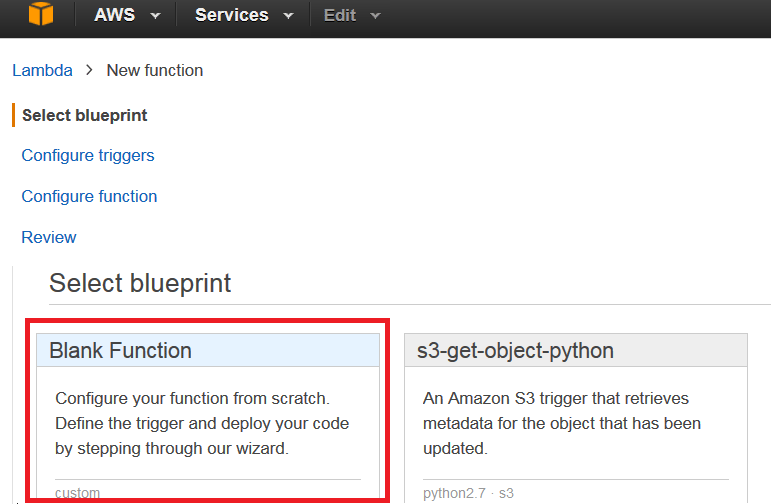AWS Certification Training
- 181k Enrolled Learners
- Weekend/Weekday
- Live Class
Today we’re going to talk about AWS Lambda. AWS Lambda is a compute service offered by Amazon. You must be curious as there are several other compute services from AWS, such as AWS EC2, AWS Elastic Beanstalk, AWS Opsworks etc., then why another compute service? In this AWS Lambda tutorial you will discover what is AWS Lambda, why it is used and in which use cases you should consider it.
Let’s see how Amazon defines AWS Lambda and then we will take a deep dive into the key concepts, understand a use case with a hands-on in the end.
Amazon explains, AWS Lambda (λ) as a ‘serverless’ compute service, meaning the developers, don’t have to worry about which AWS resources to launch, or how will they manage them, they just put the code on lambda and it runs, it’s that simple! It helps you to focus on core-competency i.e. App Building or the code.
AWS Lambda executes your backend code, by automatically managing the AWS resources. When we say ‘manage’, it includes launching or terminating instances, health checkups, auto scaling, updating or patching new updates etc.
The code that you want Lambda to run is known as a Lambda function. Now, as we know a function runs only when it is called, right? Here, Event Source is the entity which triggers a Lambda Function, and then the task is executed.
Let’s take an example to understand more clearly from this AWS Lambda tutorial.
Suppose you have an app for image uploading. Now when you upload an image, there are a lot of tasks involved before storing it, such as resizing, applying filters, compression etc.
So, this task of uploading of an image can be defined as an Event Source or the ‘trigger’ that will call the Lambda Function, and then all these tasks can be executed via the Lambda function.
In this example, a developer just has to define the event source and upload the code.
You can even check out the details of Migrating to AWS with the AWS Cloud Migration Course.
Let’s understand this example with real AWS resources now,

Fig. Lambda use case with S3
Over here we will be uploading images in the form of objects to an S3 bucket. This uploading an image to the S3 bucket, will become an event source or the ‘trigger’.
The whole process, as you can see in the diagram, is divided into 5 steps, let’s understand each one of them.
If you were to solve this scenario traditionally, along with development, you would have hired people for managing the following tasks:
This would have been an expensive, tedious and tiresome task, therefore the need for AWS Lambda is justified. AWS Lambda is compatible with Node.JS, Python and Java, so you can upload your file in a zip, define an event source and you are set!
You can read more about S3 AWS here for a deeper understanding.
We now know – How Lambda works and What Lambda does.
Now, let’s understand-
If you were to architect a solution to a problem, you should be able to identify where to use Lambda, right?
So, as an architect you have the following options to execute a task:
Let’s take the above use case as an example and understand why we chose Lambda to solve it. We will learn more about it from this AWS Lambda tutorial.
AWS OpsWorks and AWS ElasticBeanstalk are used to deploy an app, so our use case is not to create an app, but to execute a back-end code.
Your journey to cloud excellence starts here – with the AWS Master Program.
Then why not EC2?
If you were to use EC2, you would have to architect everything i.e. load balancer, EBS volumes, software stacks etc. In lambda you don’t have to worry about anything, just insert your code, and AWS will manage the rest!
For example, in EC2 you would be installing the software packages on your virtual machine which would support your code, but in Lambda you don’t have to worry about any VM, just insert plain code and Lambda will execute it for you.
But, if your code will be running for hours, and you expect a continuous stream of requests, you should probably go with EC2, because the architecture of Lambda is for a sporadic kind of workload, wherein there will be some quiet hours and some spikes in the no. of requests as well.
For example, logging the email activity for say a small company, would see more activity during the day than in the night, also there could be days when there are less emails to be processed, and sometimes the whole world could start emailing you! In both the cases, Lambda is at your service.
Considering this use case for a big social networking company, where the emails are never ending because it has a huge user base, Lambda may not be the apt choice.
You can read more about EC2 AWS here for a deeper understanding.
Limitations of AWS Lambda
Some limitations are hardware specific and some are bound by the architecture, let’s discuss all of them.
Hardware limitations include the disk size, which is limited to 512 MB, the memory can vary between 128 MB and 1536 MB. Then there are some other such as the execution timeout can be maximized to just 5 minutes, your request body payload can be not more than 6 MB and your request body is 128 KB. The request body payload is like the data that you send with a “GET” or “PUT” request in HTTP, where as the request body would be the type of request , the headers etc.
Actually, these are not limitations, but are the design boundaries which have been set in the architecture of Lambda so if your use case does not fit these, you always have the other AWS compute services at your disposal.
We discussed in this AWS Lambda Tutorial that how doing tasks in Lambda are “not” tedious and tiresome. Let’s now cover the expense part as well.
Like most of the AWS services, AWS Lambda is also a pay per use service, meaning you only pay what you use, therefore you are charged on the following parameters
Requests
Duration
* Source: AWS official website
If you have reached till here you are all set for a Hands-on in Lambda.
Let’s create a Lambda function which will log “An object has been added” once you add an object to a specific bucket in S3.
Step1: From the AWS Management Console under compute section, select AWS Lambda.

Step2: On the AWS Lambda Console, click on “Create a Lambda function”.

Step3: On the next page, you have to select a blueprint. For example, we will be selecting the blank function for our use-case.

Step4: On the next page you will be (1) setting a trigger, since we are going to work on S3, (2) select the S3 trigger and then (3) click Next.

Step5: On the configuration page, fill in the details. You can put your own code, or you can copy the same code from this use-case. After that, fill the handler and role, leave the advanced settings as it is, in the end click next.


![]()
Step6: On the next page, review all the information, and click on “Create function”.

Step7: Now, since we created the function for S3 bucket, the moment you add a file to your S3 bucket, you should get a log for the same in CloudWatch, which is a monitoring service from AWS.

Congratulations! You have successfully executed the Lambda Function.
I hope you enjoyed the deep dive into the AWS Lambda Tutorial. It is one of the most desired knowledge areas in AWS ecosystem for job positions such as Solutions Architect, Cloud Engineer, DevOps Engineer. Here’s a collection of AWS interview questions and answers to help you prepare for your next AWS job interview. Learn more about AWS with the AWS Solution Architect Certification Course.
Unlock your potential as an AWS Developer by earning your AWS Developer Certification. Take the next step in your cloud computing journey and showcase your expertise in designing,
 Thank you for registering Join Edureka Meetup community for 100+ Free Webinars each month JOIN MEETUP GROUP
Thank you for registering Join Edureka Meetup community for 100+ Free Webinars each month JOIN MEETUP GROUPedureka.co
The latest survey demonstrates that approximately 75% men and women are active into internet tasks. The internet world-wide has grown into bigger and much better and making plenty of opportunities. Home based internet jobs are becoming poplar and developing people’s everyday lives. Precisely why it is actually preferred? Mainly because it allows you to do the job from anywhere and anytime. You will enjoy more time to allocate with your family and friends and can plan out trips for holidays. Men and women are generating great revenue of $10000 every week by utilizing the efficient and intelligent approaches. Doing right work in a right path will always lead us in direction of becoming successful. You can start to earn from the 1st day at the time you have a look at our website.